STC Publications
Pivot Caribbean is an authorized distributor for STC Publishing. STC develops and publishes more than 50 titles on engineering, navigation, process industry and ports. STC publications are written by maritime professionals for maritime professionals. Most of the titles are available in both print and digital format.
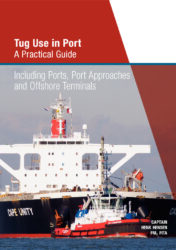
Tug Use in Port - Henk Hensen
Tug Use in Port has been known for more than two decades as the authoritative book on tug use, and is the essential practical guide to port towage and escort operations. This book is specifically written for maritime professionals involved in the daily practice and training of ship handling with tugs, particularly pilots, tug masters and training instructors. It is also of value to towing companies, shipmasters and mates of seagoing vessels and all other people or organisations involved, one way or another, with tugs and ship handling.
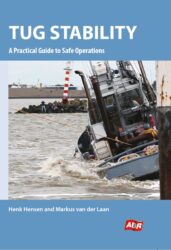
Tug Stability - Henk Hensen, Markus van der Laan
During tug operations, a number of forces and combinations are working on a tug – such as
towline, hydrodynamic, steering and propulsion forces – often at or near their maximum with
respect to the tug’s stability. It is, therefore, not just desirable but necessary for tug masters to
have at least a basic idea of the elements of stability. This educational guide to stability, specifically for tugs, aims to provide this important information to tug masters.
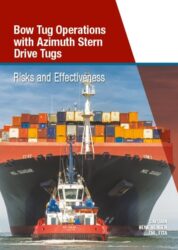
Bow Tug Operations with Azimuth Stern Drive Tugs - Henk Hensen
Bow tug operations at a ship having headway are very risky, particularly in the case of ships with a very high speed on dead slow ahead – a situation increasingly seen with large container vessels. Because of the risks involved, tug masters that have to carry out bow tug operations, and particularly tug masters of ASD-tugs should be well trained and aware of all the possible risks. These issues are all dealt with in this book, resulting in a set of guidelines for safe operations at the bow. Furthermore, the book discusses several other crucial aspects, such as skeg and stern design.
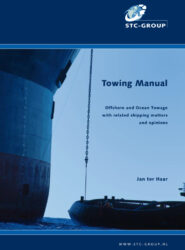
Towing Manual - Jan ter Haar
Over 40 years of sea-going experience, of which more than 30 years experience in ocean towage and salvage is expressed in this ‘Towing Manual’.
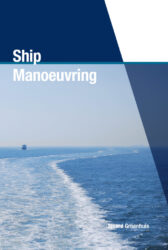
Ship Manoeuvring - Sjoerd Groenhuis
Manoeuvring is a matter of experience: through a lot of practice manoeuvres will be carried out more and more smoothly. Nevertheless, the actions that have to be taken must be based on theoretical knowledge. This knowledge of kinetics, hydrodynamics and regulations is essential for every seafarer that ever has to manoeuvre a ship. ‘Ship Manoeuvring’ provides the theoretical information, and has linked it to day-to-day practice. Matters like anchoring, tug assistance or passing other ships are addressed extensively. Also, subjects like preparing for passage or navigating through traffic separation schemes are dealt with.
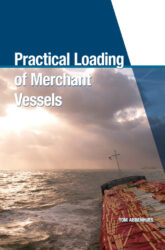
Practical Loading of Merchant Vessels - Tom Abbenhues
This book is about the everyday planning of stowage plans, loading and discharging of cargo – including lashing the cargo in a more efficient and organized way and dangerous goods.
‘Practical Loading of Merchant Vessels’ – a mixture of theory and practice – applies to younger maritime students who are just starting their careers. At the same time it expands the knowledge of experienced workers looking to maintain their professional knowledge or advance their careers.
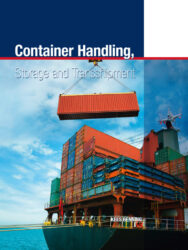
Container Handling, Storage and Transshipment - Kees Benning
Container Handling, Storage and Transshipment is a unique and complete handbook about containers. It discusses various aspects of containers, such as types of containers, wind forces, tools and, of course, safety. In addition the book pays attention to storage and transshipment.
Container Handling, Storage and Transshipment combines theory and practice, which makes it suitable for those who work in a port or container terminal or students in port and terminal management.
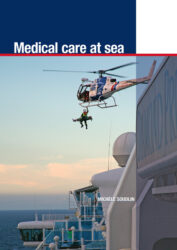
Medical Care At Sea - Michèle Soudijn
Seafarers often will have to rely on themselves for medical care and treatment – professional medical assistance or facilities are far away. ‘Medical care at sea’ meets the STCW requirements and offers practical information, clear guidelines and assistance during the course. Action protocols, descriptions of the most common conditions that can occur while on board, and background information about the human body are discussed
extensively.
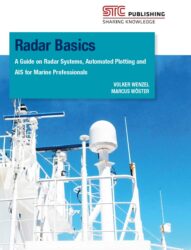
Radar Basics - Marcus Wöster, Volker Wenzel
Modern radar systems are becoming more complex and it is becoming more difficult to fully familiarise yourself with the system. Radar Basics, A Guide on Radar Systems, Automated Plotting and AIS for Marine Professionals focusses on the capabilities and limits of the everyday navigation aid radar.
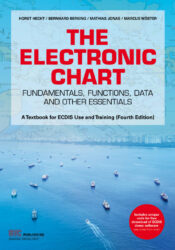
The Electronic Chart - Bernhard Berking, Horst Hecht, Marcus Wöster, Mathias Jonas
This fourth edition describes the fundamentals for both the principles of ECDIS and for proper use of its potential, functions and limitations. The reader will find fundamentals and the technical and legal background of ECDIS and chart data, general guidance on ECDIS use and good practise, and general guidance on training and certification.
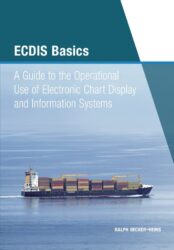
ECDIS Basics - Ralph Becker-Heinz
ECDIS is one of the most complex and sophisticated navigational tools on board a ship today. The objective of the book is to impart practical hands-on knowledge about ECDIS. For less experienced users, the book will help to gain a profound overview of the principles of ECDIS navigation and the related challenges. However, it is likely that advanced ECDIS operators will also be able to find new answers and helpful suggestions for ECDIS navigation in this book. Based upon the principles of the IMO Model Course 1.27, the book will be used in many training centres all over the world.
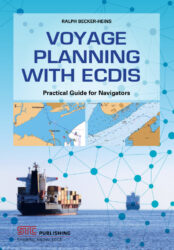
Voyage Planning with ECDIS - Ralph Becker-Heinz
To compose a comprehensive voyage plan, a wide range of aspects has to be taken into account. Not only for a young graduate this might become a challenge, also to the
experienced navigator some of the regulatory demands for a “berth to berth” voyage plan may have faded or outdated. This book is targeted to provide a profound hands-on advice on how to best compile a suitable voyage plan fully in line with the principles of IMO Resolution A.893(21).